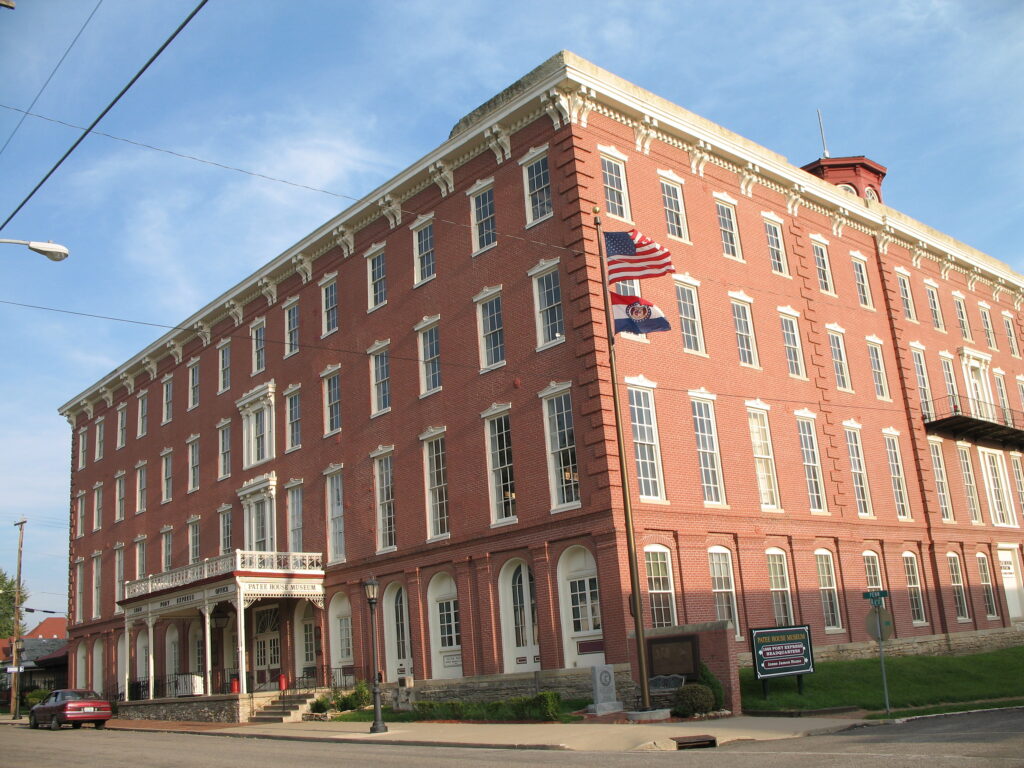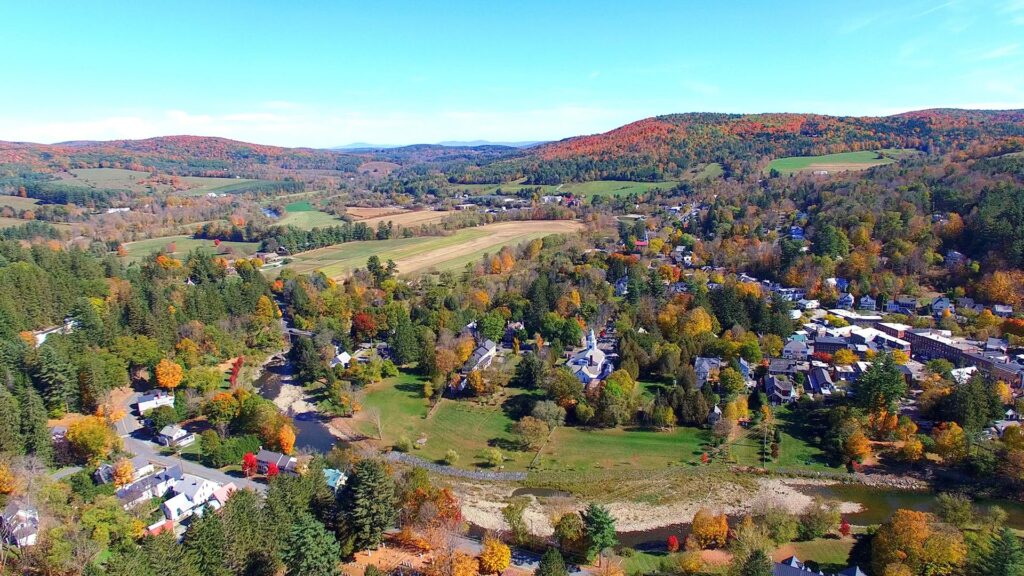1. Hackberry, Arizona
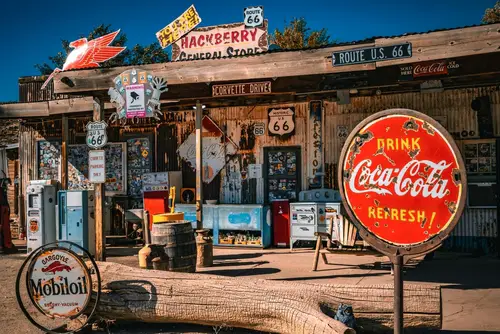
Hackberry began as a mining settlement in the 1870s and later found new life as a Route 66 stop with a general store, gas station, and café. The town thrived on cross-country travelers until I-40 bypassed it in 1978. Almost overnight, business dried up and residents left in search of opportunity. The old gas station stood as one of the few remnants of its busier days.
In the 1990s, a local enthusiast reopened the Hackberry General Store as a Route 66 museum and photo stop. That revival brought a small trickle of nostalgia tourism back, but Hackberry never regained its old rhythm. It’s a perfect case study in how bypasses drained not just money, but personality, from small towns. The quiet there feels like a long-held breath from a place that still remembers the roar of engines.
2. Glenrio, Texas/New Mexico
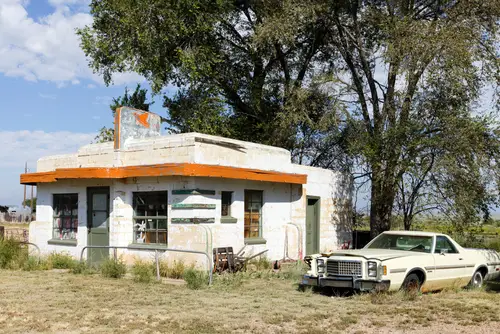
Straddling the border between Texas and New Mexico, Glenrio was once a bustling stop along Route 66, famous for its diners and motels catering to cross-country travelers. When Interstate 40 bypassed it in the 1970s, the steady hum of truck engines and family road trips vanished overnight. Businesses shuttered quickly, leaving only faded neon signs and collapsing buildings. Today, Glenrio sits completely abandoned, a ghost town with a handful of crumbling reminders of America’s golden road-trip era.
What makes Glenrio fascinating is that it died twice—once in Texas and once in New Mexico. Travelers can still see the old gas pumps and a derelict motel, frozen in time just a few hundred yards from the roaring interstate. The silence there is striking compared to the chaos that once defined it. It’s one of the clearest examples of how a simple route change could erase an entire community from the map.
3. Amboy, California
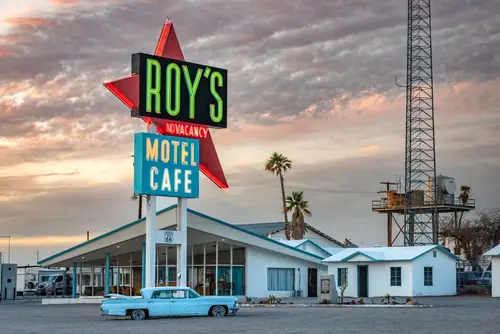
In the middle of California’s Mojave Desert, Amboy thrived as a key Route 66 pit stop where travelers refueled before tackling the desert stretch. Roy’s Motel and Café became a famous roadside icon, drawing visitors with its bold mid-century neon sign. But when I-40 opened in 1973 and rerouted traffic far to the north, Amboy was left stranded. Without travelers, the town’s businesses dried up fast.
Today, only a caretaker and a few enthusiasts maintain Amboy’s remnants, including that famous Roy’s sign. The gas pumps no longer function, and the motel stands empty, but it still draws photographers and nostalgia seekers. There’s an eerie beauty in its stillness—proof of how the desert reclaims what the highway forgets. Amboy is a monument to Route 66’s past and the cost of progress.
4. Two Guns, Arizona
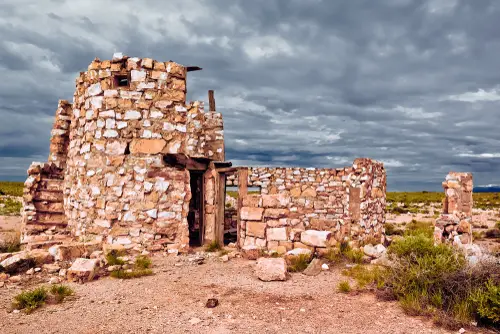
Two Guns once sat at a prime crossing of Canyon Diablo, where travelers could stop for gas, curios, and even a small zoo. Its quirky attractions made it a must-see on the Route 66 circuit during the 1920s and ’30s. But when I-40 bypassed the area in the 1970s, the steady traffic flow disappeared. The town’s short-lived revival attempts never took hold.
Today, only graffiti-covered ruins remain beside the freeway that killed it. Visitors can still wander through the stone buildings, a few feet from the modern interstate, and imagine the chatter of tourists that once filled the air. Two Guns is one of those places where you can literally see the old and new America colliding. It’s a story of ambition, oddity, and abrupt obsolescence.
5. Cuervo, New Mexico
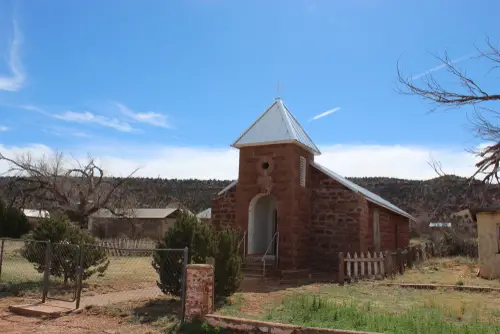
Cuervo was once a thriving ranching and railroad town that found new life on Route 66, drawing motorists with gas stations and cafés. But when I-40 cut through the area in the 1960s, it split Cuervo in two—literally dividing its residents. Businesses on the old road were left behind as the interstate sped travelers past the exit. Over time, families moved away and the town slipped into silence.
Today, Cuervo’s crumbling adobe buildings and rusted cars stand as reminders of its fractured fate. A few people still live nearby, but it’s mostly a ghost town swallowed by the desert. The sight of the interstate slicing right through its heart feels symbolic of what happened to dozens of other small towns. Cuervo didn’t just fade—it was cleaved apart by progress.
6. Ludlow, California
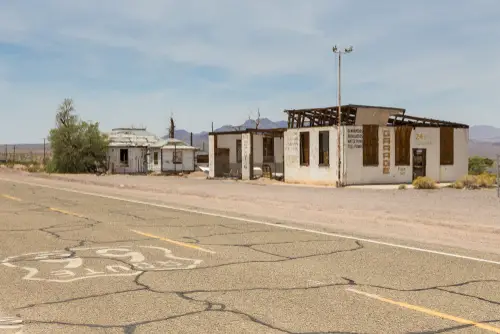
Ludlow was founded as a railroad stop in the late 1800s, then became a bustling rest stop for Route 66 travelers crossing the desert. Its gas stations and motels did steady business until I-40 bypassed the town in the 1970s. Once the lifeblood of traffic was cut off, Ludlow’s population evaporated. By the 1980s, it was nearly deserted.
Today, Ludlow exists mostly as a truck stop on the new highway, a ghostly echo of its former self. A few buildings remain from its Route 66 heyday, drawing photographers and curious travelers off the interstate. It’s one of those places where you can still smell the desert dust and hear the faint echo of travelers long gone. Ludlow reminds us how quickly a detour can erase a destination.
7. Ash Fork, Arizona
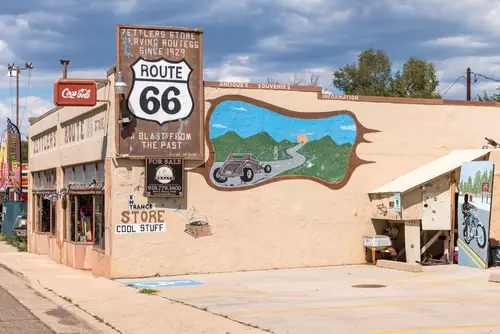
Once known as the “Flagstone Capital of the World,” Ash Fork thrived thanks to both the railroad and Route 66. When I-40 bypassed it in 1978, the town’s downtown core emptied almost overnight. Fires in the 1980s finished off many of the remaining businesses. What had been a lively, hardworking community slipped into near ruin.
Still, Ash Fork clings on in a modest way, its residents proud of their Route 66 history. The town’s old stone buildings and fading murals tell a story of grit and survival. Even though the interstate moved on, a few locals keep the memory alive with small shops and roadside displays. It’s a reminder that not every bypassed town fades completely—some just go quiet.
8. Newberry Springs, California

Newberry Springs was once a must-stop oasis for travelers heading through the Mojave Desert on Route 66. With gas stations, cafés, and quirky attractions, it had the perfect mix of convenience and charm. Then I-40 opened, sending traffic north and leaving Newberry in the dust. Many businesses couldn’t survive the loss of customers.
Today, the town still has residents, but its abandoned motels and signs tell a different story. One of its old diners, the Bagdad Café, found new fame from a 1987 film, bringing in occasional tourists. Still, most of Newberry feels like a forgotten outpost surrounded by empty desert. It’s a living town—but just barely.
9. Essex, California

Essex once served as a crucial refueling point in one of the most isolated stretches of Route 66. Its gas stations, post office, and small homes formed a tight-knit desert community. When I-40 bypassed it, the few businesses that relied on road traffic vanished. The desert quickly reclaimed the town, leaving behind a few scattered structures.
Today, the remains of the old gas station and the school still stand, slowly succumbing to the harsh climate. Travelers who venture off the freeway can still see the remnants of a once-thriving pit stop. Essex’s decline feels almost poetic—progress paved right past it, leaving only wind and silence. It’s one of those places where you can feel how thin the line between survival and abandonment really is.
10. Texola, Oklahoma
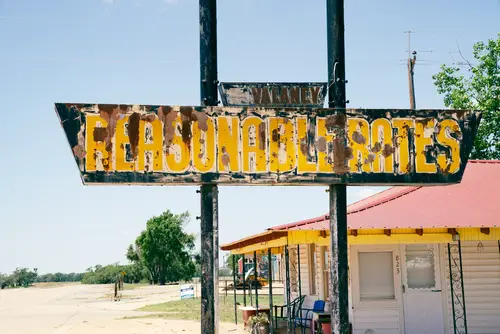
Perched just inside Oklahoma’s border with Texas, Texola was a lively Route 66 town filled with gas stations and mom-and-pop stores. When the interstate rerouted travelers, the town’s few remaining businesses couldn’t hold on. Its population dropped from hundreds to just a handful. Abandoned buildings now line the streets, their paint peeling under the relentless sun.
Texola is especially haunting because it’s still barely inhabited. A handful of people remain, living among relics of the old highway days. The town’s sign famously reads, “There’s no other place like this place anywhere near this place, so this must be the place.” It’s a fitting epitaph for a town that the freeway left behind.
11. Seligman, Arizona
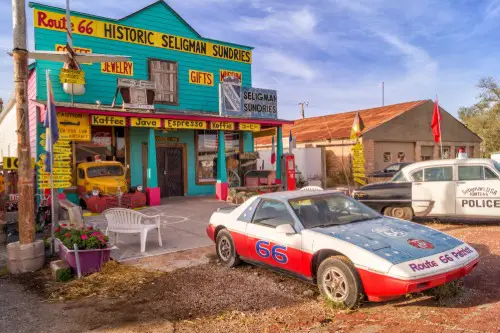
Seligman was hit hard when I-40 bypassed it in 1978, taking nearly all its tourist traffic with it. Businesses closed, and the once-busy stretch of Route 66 through town became eerily quiet. Many thought Seligman would disappear entirely, like so many others. But something remarkable happened—the town decided to fight back.
Local barber Angel Delgadillo led an effort to preserve and promote Route 66 as a historic byway. His campaign helped revive Seligman as a hub for nostalgia tourism. Today, visitors flock there for old diners, classic cars, and Americana charm. It’s one of the few towns that turned a bypass into a comeback.
12. Santa Rosa, New Mexico
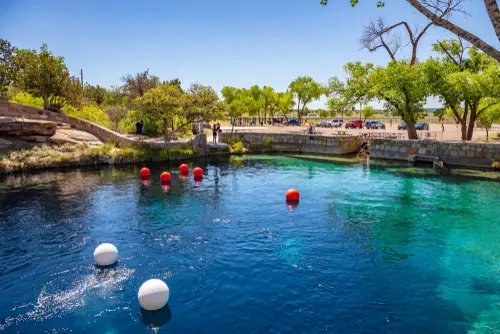
Santa Rosa was once a major rest stop along Route 66, famous for its Blue Hole—a natural spring that became a swimming and diving attraction. When I-40 opened in the late 1960s, traffic bypassed its downtown, crippling many family-run motels and diners. For decades, the town struggled to find its footing again. The highway had made Santa Rosa invisible to the travelers it once depended on.
Over time, though, the town leveraged its Route 66 heritage and outdoor appeal to lure visitors off the freeway. The Blue Hole remains a tourist draw, but much of old Santa Rosa sits quiet, lined with shuttered motels and peeling signs. It’s not quite a ghost town, but it’s haunted by the ghosts of its glory days. Santa Rosa’s story shows how some bypassed towns never fully die—they just change shape.
13. Oatman, Arizona

Unlike many bypassed towns, Oatman didn’t vanish completely—it transformed into a living relic. Once a booming gold-mining town, it found new life on Route 66 as a quirky roadside attraction with burros roaming its streets. When I-40 bypassed it, Oatman seemed doomed. But tourism, not traffic, ended up saving it.
Today, Oatman thrives as a preserved piece of Old West kitsch. Visitors come for the donkeys, stay for the nostalgia, and leave with a sense of what the highway once meant. It’s proof that some towns managed to outsmart the freeway by turning history into heritage. Oatman didn’t die—it adapted.
14. Adrian, Texas
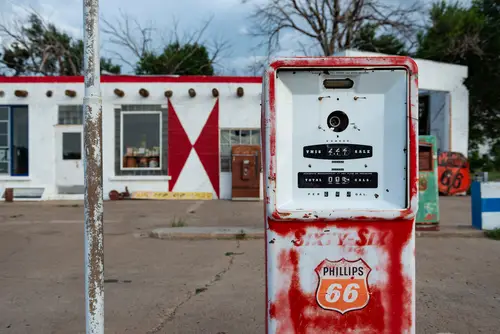
Adrian sat proudly at the midpoint of Route 66, the spot where travelers celebrated being halfway between Chicago and Los Angeles. Its cafés, motels, and souvenir shops thrived on tourists eager to mark the milestone. When I-40 cut a faster path south of town, that steady flow of travelers evaporated. Within a few short years, Adrian’s once-bustling main street grew eerily quiet.
Though a few residents stayed, most businesses closed, leaving faded signs as the only reminders of the town’s heyday. The Midpoint Café eventually became a nostalgic stop for those chasing the spirit of the old highway. Its survival owes more to sentiment than commerce. Adrian’s story mirrors countless others—thriving on the road until the road moved on.
15. Peach Springs, Arizona
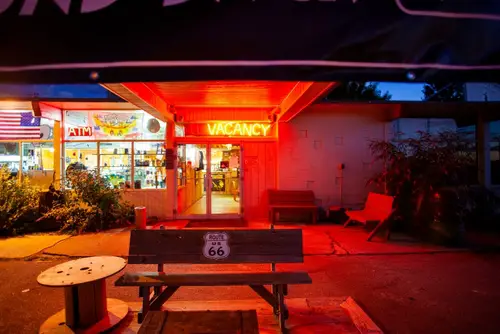
Peach Springs once buzzed with travelers eager to explore the rugged beauty of northwestern Arizona. As a hub along Route 66, it offered lodging, meals, and the promise of nearby adventure in the Grand Canyon Caverns. But when I-40 bypassed the area in the late 1970s, that traffic all but vanished. Businesses folded, and the once-lively stretch turned into a forgotten detour.
The town still serves as the administrative center for the Hualapai Nation, but its tourist pulse never recovered. The few remaining motels and gas stations feel frozen in another time. Occasionally, Route 66 enthusiasts drift through, snapping photos of old signs and peeling paint. Peach Springs stands as a quiet reminder of how bypassed roads lead to bypassed lives.
16. Erick, Oklahoma
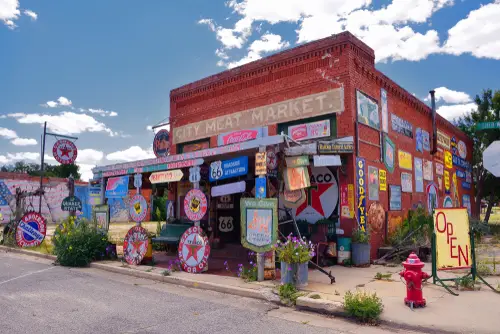
Erick thrived on Route 66 with its diners, auto shops, and friendly small-town energy. It was the kind of place where travelers could rest, refuel, and chat with locals who’d been serving the road for generations. But when I-40 diverted traffic away in the 1970s, the businesses that defined Erick began to fade. The hum of engines was replaced by silence and boarded-up storefronts.
For a while, Erick tried to reinvent itself through music tourism, celebrating its connection to country artist Roger Miller. A small museum and mural project brought a flicker of attention, but the crowds never truly returned. The town now feels more like a memory than a stop. Erick’s story captures the bittersweet rhythm of so many Route 66 towns—alive one day, forgotten the next.
17. Joseph City, Arizona
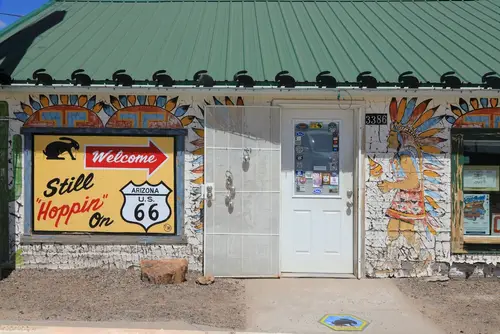
Joseph City was once a vital rest point between Winslow and Holbrook, offering weary travelers food, gas, and hospitality. Route 66 brought prosperity, keeping motels and diners busy through the 1950s and ’60s. But when I-40 redirected the flow of traffic, that lifeline was severed. Slowly, the neon lights dimmed, and families packed up for bigger towns.
A few local businesses, like the famous Jack Rabbit Trading Post, refused to give in. Its bold “Here It Is” billboard still lures nostalgia-seekers off the interstate. Yet outside of that, Joseph City feels like a ghost of its former self. It’s a quiet casualty of convenience, bypassed in the name of progress.
18. Truxton, Arizona

Truxton grew around a café, gas station, and small motel that thrived on Route 66’s endless flow of cars. The town’s simple charm made it a favorite among travelers trekking between Kingman and Seligman. When I-40 opened in the late 1970s, it left Truxton miles off the main drag. Businesses that once saw hundreds of customers a day suddenly had none.
Today, only a few scattered buildings remain, weathered by desert sun and time. A handful of locals stay, maintaining what’s left of the community’s heartbeat. The wind whistles through empty storefronts where laughter once filled the air. Truxton’s slow fade is a familiar tale—another town left behind by the future.
19. Conway, Texas
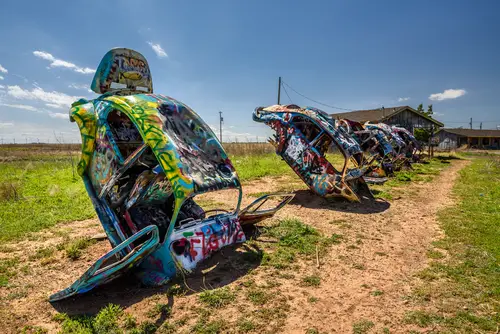
Conway was a modest Route 66 pit stop with a handful of service stations, diners, and friendly faces. It thrived during the height of cross-country car culture, serving thousands of travelers each year. When I-40 bypassed the area, the town’s traffic-dependent economy collapsed almost overnight. Within a few years, Conway’s main street was deserted.
The Leaning Tower of Texas, a tilted water tower designed to attract tourists, became one of its last standing landmarks. While it still draws the occasional visitor, the town around it has long since disappeared. The contrast between that whimsical relic and the surrounding emptiness is striking. Conway may be gone, but its odd landmark keeps its memory upright.
20. Bellemont, Arizona
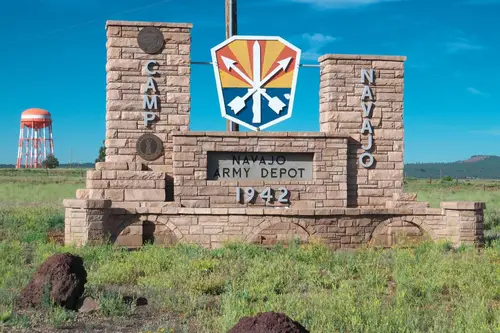
Bellemont once thrived as a scenic mountain stop along Route 66, offering cool air and cozy lodges to travelers heading toward Flagstaff. It was small but steady, powered by road trippers who needed a rest before the high desert climb. When I-40 opened a straighter path nearby, Bellemont’s reason for being evaporated. Businesses shuttered, and the town fell into disrepair.
A few remnants remain—rusted gas pumps, collapsing cabins, and the faint outlines of once-busy motels. Modern traffic speeds past without realizing a town once stood there. For those who stop, Bellemont feels suspended between eras. It’s a fitting final chapter in the long list of places that disappeared when the freeway did what it was built to do—move on.
This post 20 Highway Towns That Died the Moment the Freeway Moved was first published on American Charm.

